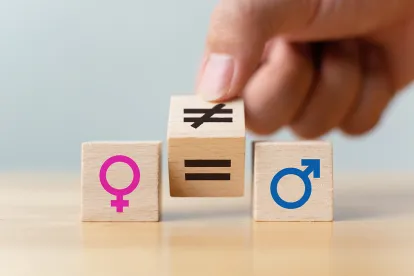On June 15, 2020, the Supreme Court of the United States issued its decision in Bostock v. Clayton County, Georgia, holding that, pursuant to Title VII of the Civil Rights Act of 1964, covered employers may not discriminate against applicants or employees on the basis of sexual orientation or gender identity. Part one covered the Bostock holding’s implications for sex-segregated facilities in the employment context. Part two addressed the holding’s consequences for dress codes and grooming standards. This final article in the series encompasses the Bostock holding’s implications for pronoun and honorific usage in the workplace.
Pronouns and Honorifics
The traditional or “binary” way of viewing pronouns in English assumes that there are two—and only two—“categories” of individuals—i.e., male and female. However, some individuals do not fit neatly within the categories of “man” or “woman” or “male” or “female.” The term “non-binary” is one way to refer to individuals who do not fit within the traditional binary construct.
In the past, grammar experts had stated that referring to an individual with the pronoun “they” was incorrect because “they” is a plural pronoun. However, the word “they” is (and has been) commonly used by many individuals as a preferred gender-neutral pronoun, so much so that now “they” is widely accepted and endorsed by multiple style manuals as a third-person singular pronoun.
Because many individuals’ experiences transcend the gender binary, other pronouns have become popular. For example, where the binary pronouns would be he/him/his and she/her/hers, gender-neutral pronouns would be they/them/theirs; ze (or zie)/zir/zirs; ze (or zie)/hir/hirs; ne/nir/nirs; xe; and ve. Many other gender-neutral pronouns are coming into the mainstream vernacular as well.
Similar to pronouns, honorifics are titles such as, “Mr., Miss, Mrs., and Ms.,” which indicate the gender of the individual and are typically part of a binary view of honorifics. In addition to these, gender-neutral honorifics such as “Mx.” are used.
Title VII and Other Laws and Guidance
Even before Bostock, courts, agencies, and employers grappled with pronoun usage issues. Indeed, transgender workers had filed charges of discrimination with the U.S. Equal Employment Opportunity Commission (EEOC) and lawsuits under Title VII alleging that they had been misgendered by employers and/or coworkers’ pronoun misuses.
With the Supreme Court’s Bostock holding that gender identity discrimination is sex discrimination under Title VII, some courts may construe intentional and persistent misgendering as evidence of discrimination. (Notably, the Supreme Court referred to Ms. Stephens with pronouns consistent with her gender identity throughout the lengthy opinion.) Further, the EEOC’s new guidance issued on June 30, 2020, highlights the following example of discrimination as a violation of Title VII: “[I]f an employer fires an employee because that person was identified as male at birth, but uses feminine pronouns and identifies as a female, the employer is taking action against the individual because of sex since the action would not have been taken but for the fact the employee was originally identified as male.”
Further, while Title VII does not cover every employee in the United States, state and local laws protect many employees from gender identity discrimination. Some laws are explicit, such as California’s Fair Employment and Housing Council’s regulations and the New York City Human Rights Law (NYCHRL), the latter providing as follows:
The NYCHRL requires employers and covered entities to use the name, pronouns, and title (e.g., Ms./Mrs./Mx.) with which a person self-identifies, regardless of the person’s sex assigned at birth, anatomy, gender, medical history, appearance, or the sex indicated on the person’s identification.
“Examples of Violations” concerning pronoun usage are listed as follows:
-
Intentional or repeated refusal to use a person’s name, pronouns, or title. For example, repeatedly calling a transgender woman ‘him’ or ’Mr.’ after she has made clear that she uses she/her and Ms.
-
Refusal to use a person’s name, pronouns, or title because they do not conform to gender stereotypes. For example, insisting on calling a non-binary person ’Mr.’ after they have requested to be called ‘Mx.’
-
Conditioning a person’s use of their name on obtaining a court-ordered name change or providing identification in that name. For example, a covered entity may not refuse to call a transgender man who introduces himself as Manuel by that name because his identification lists his name as Maribel.
-
Requiring a person to provide information about their medical history or proof of having undergone particular medical procedures in order to use their preferred name, pronouns, or title.
Further, even when not explicit, laws prohibiting gender identity discrimination may be interpreted to prohibit the use of pronouns inconsistent with an individual’s gender identity.
Practical Takeaways
Although the majority opinion in Bostock leaves open a number of questions regarding sex-segregated facilities, dress codes, and pronoun usage, the application of the Bostock holding to the employer-employee relationship suggests that employers may want to utilize the preferred names and pronouns of their employees. Further, employers may want to be cognizant of state and local laws that may offer protections from gender identity discrimination beyond what Title VII provides. Employers may also want to assess the potential interplay between gender designations and various personnel and communications systems, such as human resources information systems, benefits programs, and other platforms. When an employee transitions, the employer and the transitioning employee may want to discuss records and systems that can and cannot be amended and the timeline for when changes may be deemed appropriate, desired, and legally compliant.
Companies seeking to create more inclusive workplaces for transgender and gender non-binary individuals can find further information and guidance from a number of organizations that provide educational resources and technical assistance.




 />i
/>i
